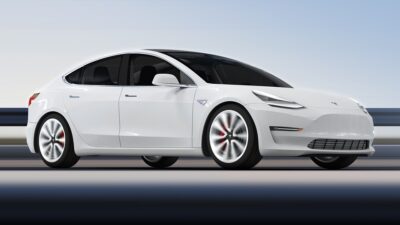As electric vehicles (EVs) become increasingly ubiquitous, cities around the globe are racing to enhance their charging infrastructure. This transformation is essential not only for accommodating the growing number of EVs but also for fulfilling commitments to sustainability and reducing carbon emissions. Here’s a closer look at how cities are gearing up for this electric future.
The EV Boom: A Contextual Overview
The global push towards electric vehicles is driven by a combination of government regulations, environmental concerns, and advancements in technology. Major automotive manufacturers are committing to phasing out internal combustion engines, while many governments are setting ambitious targets for EV adoption. By 2030, some regions aim for 30-50% of new cars sold to be electric. This shift necessitates a robust and accessible charging infrastructure.
Expanding Charging Infrastructure
1. Strategic Planning and Investments
Cities are beginning to collaborate with private companies and energy providers to develop comprehensive charging strategies. This includes identifying high-demand areas for charging stations, such as urban centers, shopping districts, and major thoroughfares. Investments are also being made in fast-charging options to reduce charging time and enhance convenience for EV owners.
2. Public Charging Stations
Municipalities are installing an increasing number of public charging stations. In urban environments, this means placing chargers in parking lots and public spaces to meet the needs of residents without access to home charging. These stations are often equipped with both Level 2 chargers for longer stays and DC fast chargers for quick boosts.
3. Incentives and Partnerships
To encourage the installation of charging stations, many cities are offering incentives to businesses and landlords. Grants, tax credits, and streamlined permitting processes are making it easier for commercial properties to host chargers. Partnerships with private companies can also drive innovation and investment in the sector.
4. Smart Infrastructure Development
As cities modernize their infrastructures, the integration of smart technology into charging stations is a significant trend. Smart chargers can communicate with the grid to manage energy demands, schedule charging times based on energy prices, and even facilitate payments through mobile apps. This tech-savviness promotes efficiency and encourages more drivers to make the leap to electric.
Overcoming Challenges
1. Grid Capacity
A major hurdle in expanding charging infrastructure is ensuring that the electrical grid can handle increased demand. Many cities are evaluating their current grid capabilities and exploring renewable energy sources to support charging stations. Investments in grid upgrades and energy storage solutions are critical to mitigate potential strain.
2. Equity in Access
Ensuring equitable access to charging stations is a key priority. Many low-income communities and urban centers face barriers, such as a lack of home charging options, which can disproportionately affect EV adoption rates. Cities are working to develop strategies that provide more charging access to underserved areas, enhancing equity in the transition to electric mobility.
3. User Experience and Accessibility
User experience is paramount in encouraging EV adoption. Cities are focusing on creating intuitive interfaces for charging stations, ensuring they are easy to locate and use. Additionally, making charging stations universally accessible, including designs that accommodate people with disabilities, is a critical consideration in planning.
The Road Ahead
The transformation of urban landscapes into EV-friendly environments requires coordinated efforts across various sectors. As cities embrace this shift, they are not just investing in charging infrastructure; they are redefining their commitment to sustainable urban mobility. Looking ahead, continued collaboration between government, industry, and communities will be essential to craft and implement innovative solutions that meet the demands of an electrified future.
In conclusion, the EV boom presents both opportunities and challenges. With thoughtful planning and investment, cities can not only accommodate this new wave of transportation but also contribute significantly to reducing emissions and promoting a cleaner, greener planet. The future of urban mobility is electric, and cities are powering up to meet the challenge.



